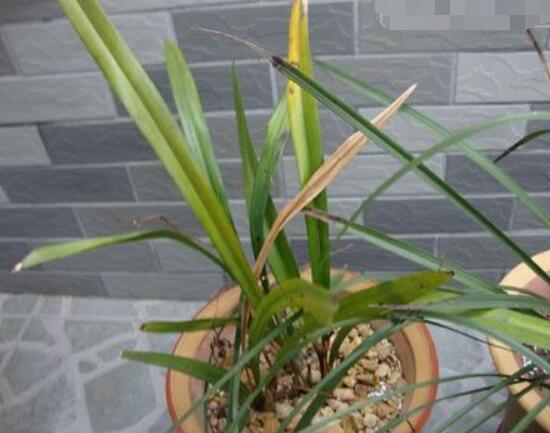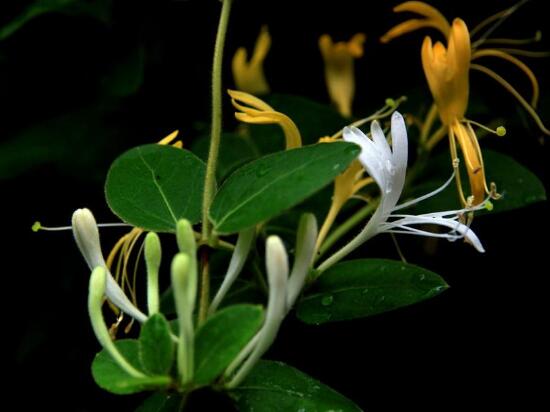What should we do when morning glory grows? the common diseases and insect pests of morning glory / aphids do great harm.
Morning glory, one of the most common flowers in daily life, is often found on the side of the road in the wild, and is now potted at home by many flower friends. But indoor is not compared to outdoor, morning glory environment needs us to create, a little wrong, morning glory will be disturbed by diseases and insect pests, then morning glory worms how to do? It's easy to find out what kind of bug it is and solve it. The following is the prevention and control of common diseases and insect pests of morning glory. Come in and have a look.
First, morning glory worms how to do, spray with medicine

In the breeding method of morning glory, we know that morning glory has requirements for soil, water, light and so on. Once the morning glory is not up to the standard, the insects will come. As for the morning glory worms, it is very simple to spray them with medicine. Morning glory pest control is what flower friends should master, the specific pests and diseases, we continue to look down.
(1) Pest symptoms and solutions of morning glory.
Generally speaking, potted morning glory is rarely infested by insects, but if your home is particularly sloppy, it will naturally attract many pests. Generally speaking, the common pests of morning glory are aphids and leaf rollers, which can be sprayed and killed after discovery. The specific use is as follows:
1. Aphids
Aphids are the most common and main pest of morning glory, which mainly harms the leaves and young stems of morning glory, and will cause serious erosion. Not only that, honeydew secreted by aphids can attract ants and cause soot or other fungal diseases.
Solution: natural enemies can be used to kill, such as red-lipped ladybug, Japanese square beetle, red ring ladybug and so on, which play a better role in preying on aphids. However, when a large number of aphids are found, isolation measures should be taken and 1, 000 times of omethoate or pyrethroid should be sprayed in turn.
2. Red spider
This insect is one of the main pests of morning glory, which is rare. But once it is infested by red spiders, it is a headache. The way of doing harm is to suck the juice from the leaves of flowers with mouth organs, so that the chlorophyll of flowers is destroyed, the leaves show gray-yellow spots or patches, and the leaves become withered and yellow, or even fall off.
Solution: when finding the above symptoms, it should be noted that if individual leaves are damaged, insect leaves can be removed; when more leaves are damaged, spraying should be carried out as soon as possible. The commonly used pesticides are propargite, dicofol, dimethoate, Huachongjing, and so on.
(2) Disease symptoms and solutions of morning glory.
Morning glory worms how to do, read the above content we should know how to do it! However, in addition to being attacked by insects, the disease also endangers morning glory all the time. The common diseases of morning glory are: White mildew, leaf spot, virus disease and seedling quenching disease. The specific symptoms and solutions are as follows:
1. White mildew
The disease is one of the main diseases of morning glory, it mainly harms the leaves of morning glory, the symptoms are: the leaves appear in patches of white spots, the later aggravation will lead to the shedding of infected leaves.
Solution: after finding the above symptoms, remove the diseased leaves as soon as possible, and timely spray 75% chlorothalonil 600-800 times liquid.
2. Leaf spot
Leaf spot disease, which generally occurs after wind injury, sunburn and frost injury, mainly harms the leaves of petunia and, in severe cases, can also lead to the death of the whole plant.
Solution: remove the diseased leaves in time and burn them, and remove the surrounding fallen leaves as soon as possible; spray 1000 times the concentration of Dysenamine.
3. Brown spot
The disease is also one of the main diseases of morning glory, when the disease occurs, there will be round or polygonal spots on the leaves, dark gray in the center and dark brown at the edge. Disease spot surface will produce a lot of light black mildew layer, serious disease spot will not be covered with the whole leaf, the leaf withered.
Solution: remove the diseased leaves in time; spray Guoguang must be fresh in time at the initial stage of the disease, spray once every 7-10 days, and spray continuously for 2 or 3 times.
4. Virus disease
Virus disease, one of the main diseases of morning glory, symptoms: morning glory appears slow growth and weak rhizome, which is very likely to be infected with virus disease, serious leaves will appear yellowing phenomenon.
Solution: remove the diseased leaves and spray 1000 times of omethoate.
What to do when the spring feather grows worms? the control / maintenance of common diseases and insect pests of spring feather is very important.
When we plant spring feathers, if improper maintenance or environmental discomfort, may cause diseases and insect pests, it is great harm to plants, then what if spring feathers grow insects? Today we will learn about the correct prevention and control methods of common diseases and insect pests in Chunyu.
What if the spring feather grows worms?
Usually, if we are familiar with the breeding methods and precautions of Chunyu, it is rare to have long insects or diseases, and once there are diseases and insect pests, corresponding measures should be taken in time according to the diseases and insect pests. The insects that target Chunyu are mainly red spiders and shell insects; the diseases are leaf spot, anthracnose and so on.
1. Common insect pests in spring feathers
1. Red spider
The red spider can spread with the help of the wind. Once this pest is found on the spring feather, it should be removed in time, otherwise it may quickly crisis to other plants, and the cause of the red spider is generally low humidity and dry heat. Spray with 15 grams of laundry detergent, 20% sodium hydroxide 15 milliliters and 7.5 kilograms of water, and kill the red spider after 2 days.
Note: after killing the red spider, we need to place it to appear again, do not let the spring feather in the dry and hot environment for a long time, frequent watering and ventilation can place the appearance of the red spider.
2. Scale insects
Shell insects are the most common spring feather pests, which are more likely to appear than red spiders. Scientific studies have shown that the occurrence of shell insects may be caused by poor ventilation and insufficient light, so reasonable maintenance should be taken after the shell insects are removed.
Note: mix liquor and water at 1:2 to prepare the solution, then pour it on the surface of the basin soil, hand in once every half a month to control scale insects. In addition, it is also necessary to pay attention to the prevention and control of common diseases and insect pests in spring feathers, so that spiders have enough light and keep them in a ventilated environment.
2. Diseases of spring feathers
1. Leaf spot
Leaf spot is the most common disease of spring feather. it is characterized by round leaf spots on leaves, brown to brown in color, dark brown edges, yellow halos on the periphery, and spots of different sizes on the disease spots.
Prevention and control measures: it can be sprayed with 50% concentration of Duling bacteria diluted into 1000 times solution, or it can be controlled by wettable powder such as methyl topiramate and Dysen zinc.
2. Anthrax
Round or oval reddish-brown spots appear on the leaves, and then gradually expand, the edges will become purple-brown, the most hot spots will become black-brown, causing the leaves to dry up and fall off, and in serious cases, it will make the spring feather leaves yellowing, and even more than half of the leaves will die.
Prevention and control measures: cut off the diseased leaves, spray 1000 times of methyl topiramate wettable powder, generally spray once in 7-10 days, about 3 times in a row can achieve good results. In addition, attention should be paid to fertilization and watering.
Conclusion: when planting spring feathers, the prevention and control of common diseases and insect pests of spring feathers must be understood. In fact, many diseases are caused by the environment and conservation, so in order to reduce the number of diseases and insect pests, we need to pay more attention to maintenance at ordinary times. and make the environment where Chunyu is clean and hygienic.
Drunken fish grass worms how to do, drunk fish grass common diseases and insect pests control / 2 insect pests 2 diseases
When we cultivate drunken fish and grass, the last thing we want to encounter is diseases and insect pests. This kind of problem is very harmful to the plant, which will not only affect its beautiful plant shape, but also lead to plant death in serious cases. So what if the drunken fish grass grows worms? How to prevent and control the common diseases and insect pests of drunken fish grass? Next, the editor will take you to learn about it.
First, drunken fish grass worms how to do, find the reason
If you want to know what to do when the drunken fish grass grows, we must first understand what kind of worm is growing, so that we can deal with it pertinently, because the treatment methods of each kind of diseases and insect pests are different, and the details are described in detail below. Friends who are troubled in this respect can learn about it.
II. Control of common diseases and insect pests of drunken fish and grass
1. Whitefly
Whitefly is a small herbivorous pest belonging to Hemiptera. It mainly harms the new buds, leaves and flowers of drunken fish grass. It will be inserted from the back of the leaves with piercing mouthparts, and then gradually suck up the juice. This leads to the loss of a large amount of nutrients in the plant and the phenomenon of yellowing and wilting.
Control method: for this kind of drunken fish grass disease and insect pest, we can use 1500 times EC spray to directly kill it, it can kill eggs, nymphs and adults.
two。 Aphids
Aphids are one of the most destructive pests on earth, which are harmful to many plants, and drunk fish grass is one of them. The main damage of this pest is that adults and nymphs feed on leaves, stems, tender heads and tender panicle sap, resulting in a large loss of plant nutrients and wilting.
Control method: when we deal with this drunken fish grass disease and insect pest, we can spray it with 3000 times of aldicarb wettable powder or 2.5% 3000 times of methomyl emulsion.
3. Soft rot
Among the diseases and insect pests of drunken fish grass, soft rot is a relatively common disease. During the onset of the disease, many water-like spots will appear on the roots of the plant, and the rhizome will gradually rot and emit a stench with the passage of time. Finally, it gradually rots to death.
Prevention and treatment: in the prevention and control of this disease, we can use 38% cuproloxil diluted by 1000 times to carry out root irrigation treatment, generally once a week, after 2-3 times can be prevented.
4. Leaf spot disease
Leaf spot is a common plant disease, its high incidence period is generally in spring and autumn, when the disease occurs, many oval brown disease spots will appear on the leaves of drunk fish grass, and with the passage of time, the disease spot will gradually spread, and the color will slowly become darker. Finally, the plant can not carry out photosynthesis and die.
Control method: for this drunken fish grass disease and insect pest, we can use 20% silazole ·prochloraz 1000 times to spray the diseased plant, usually spray once every 7-10 days, and then recover after 2-3 times.
- Prev

What about orchid worms? prevention and control of common orchid diseases and insect pests (diluted washing powder can kill insects)
Orchids are common potted flowers in daily life. Orchids are very popular because they are beautiful and unpublicized. In nature, any plant can grow worms, and orchids are no exception. The common pests of orchids are red spiders, scale insects and whitefly. Many people don't know what to do with orchid worms.
- Next

How to deal with the long insects of potted honeysuckle, and the control of diseases and insect pests of honeysuckle (spraying insecticide)
Honeysuckle is a kind of good-smelling flower. Honeysuckle is loved by people for its unique fragrance. With the progress of pot technology, honeysuckle can also be raised at home. Insects can grow in any plant in nature, and honeysuckle is no exception.
Related
- Fuxing push coffee new agricultural production and marketing class: lack of small-scale processing plants
- Jujube rice field leisure farm deep ploughing Yilan for five years to create a space for organic food and play
- Nongyu Farm-A trial of organic papaya for brave women with advanced technology
- Four points for attention in the prevention and control of diseases and insect pests of edible fungi
- How to add nutrient solution to Edible Fungi
- Is there any good way to control edible fungus mites?
- Open Inoculation Technology of Edible Fungi
- Is there any clever way to use fertilizer for edible fungus in winter?
- What agents are used to kill the pathogens of edible fungi in the mushroom shed?
- Rapid drying of Edible Fungi

